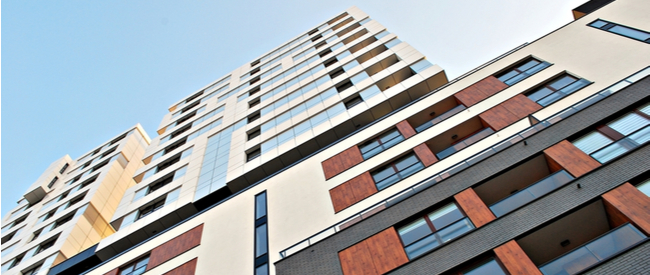
SiteSeer happens to be based in one of the fastest-growing metropolitan areas in the country. Earlier this year, we released our updated 15 Fastest-Growing Metropolitan and Micropolitan Areas blog post, and Boise came in #2 on the list of metro areas, jumping 3.15% from June 2018 to June 2020.
When we update that data next month, we fully expect Boise to rank high once again. And it’s not just Boise that has seen population growth. Our local news station KTVB shared last month that:
- Idaho continues to grow statewide, with the fastest-growing population in the country between 2019-2020.
- Approximately 70.5% of Idahoans lived in cities in 2020 compared to 61.2% in 1980 (per the Idaho Department of Labor).
- Between 2019-2020, eight of the top 200 fastest-growing cities were in Idaho with growth rates ranging from 3.5% to 7.5%.
The Idaho Press shares that the area’s boom that was already underway pre-COVID seemed to have amplified during 2020:
- Californians accounted for 10,073 of 2020’s new moves into the Boise area. That was up 27.5% from 2019.
- Washingtonians were the next highest population in-migration: 2,776 in 2020, up from 2,285 in 2019.
We could go on, but you get the picture: a higher number than normal has been moving to this state. And that means great things for economic growth…right?
We’ll be honest upfront: It’s a question we don’t have an exact answer for. Population growth leads to demand generally, and we’ve seen it in other cities who have experienced explosive growth like Austin, Texas (check out this great deep dive from BoiseDev); Phoenix, Arizona; and San Antonio, Texas. However, we’ll make something of a pro/con list of population growth’s impact on an economy from our perspective. This topic has been hot this year among SiteSeer clients and colleagues, so let’s dig into it.
A Pro: Increased Demand for Services and Products
Obviously if you’re a retailer thinking about locating in Boise or a similar market (like Myrtle Beach, South Carolina, or St. George, Utah), you like the look of those increasing population figures. More people = more business, right? It certainly could, but there are a few things to research:
- Is the increased population in your target age group?
- Are the people moving to the area permanent or temporary (i.e. seasonal or retirees that winter elsewhere) residents?
- Does a large percentage of the new residents meet your customer profile?
If you’re a retailer whose target customer profile is post-college, 23-35 years old, without children, and you’re looking at moving into a market that is seeing a large influx of retirees and Baby Boomers, you might want to crunch those numbers again. The population growth might not have any impact on your business in that area, and thus, the boom won’t help you.
Remember: if an area experiences a large migration of Californians, you need to understand those customers and the net effect that their needs and desires might have on your business. What are their buying habits? Will they be seeking the same types of goods and services in their new city? Don’t assume that the traits of your current trade area population are the same traits of your newly migrated trade area population.
A Con: Increased Cost of Land, Construction and Materials
Sometimes businesses are tempted to flock to a new market because of population growth, but it’s absolutely essential to first to make sure your initial investment in getting open is commensurate with your desired payback period.
By now we’ve all heard plenty about the shortage of labor and increased building costs in the U.S. The cost of steel mill and wood products is through the roof, and there’s a shortage of construction workers in many markets. If you’re planning to build a new store from the ground up, what does this do to your overall building costs? Can you recoup those costs in the timeframe you’d initially anticipated?
And just because you were planning to move into an existing shopping center (and not build new) doesn’t mean you’re off the hook. Commercial real estate costs might have risen due to increased demand too. Factor all of this into your forecasting.
Keep Household Income in Mind
As you do your research, preferred household income is certainly a factor that will go into your site selection and market research. But in post-COVID times, this might be tricky to get a handle on. Some cities’ increase in population might have do with the rise of remote working, with people earning higher incomes even in a place with a much lower median income. But in other areas, people might be moving to an area willing to make less income because they seek a better quality of life. That means they might scale back on spending.
If possible, find out what is drawing people to an area. If it’s the opening of a large employer, that adds stability. If the rise in remote working has created a population boom, you need to do your best analysis on whether that boom is temporary, or whether you’re looking at a market that is hot now and will cool as more and more companies return to offices. And again, who are your customers? What is happening with them?
Bottom Line: Do Your Homework
It’s impossible to predict with 100% accuracy what behavioral changes in the post-COVID era will stick around and what will go away. There are many questions lingering without clear answers.
Our advice is to step up your game in terms of market research before you decide to “ride the wave” and add locations in a market because its population is growing. There is nothing wrong with striking while the iron is hot, so to speak, but you must make sure you’re planning for the long term as well as the short term.
If SiteSeer’s professional services team can help, contact us! Our site selection platform is capable of helping your evaluate markets, understand customers and much more. Take a demo today and ask how our team can support you.


